Carnival in Rio de Janeiro
02.01.2018 | updated: 06.03.2024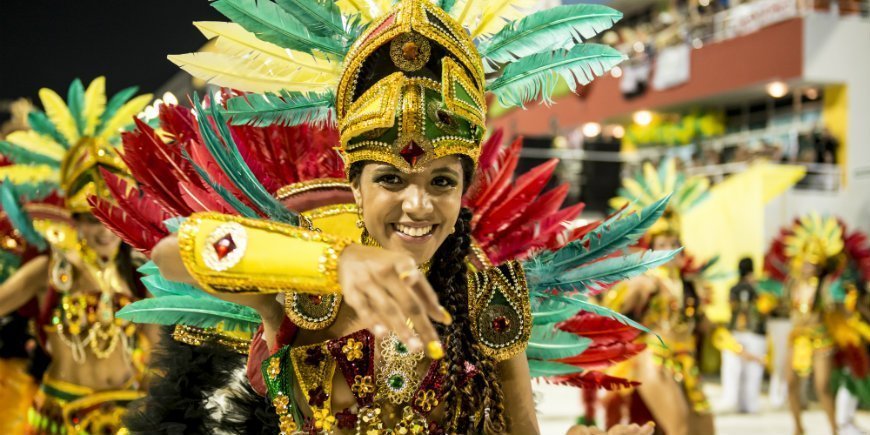
Gorgeous feathered clothing in all sorts of colours. Lightly-clad women. Intense drum rhythms, chasing your own heartbeat. An injection of cheer and joy.
The Carnival in Rio de Janeiro is a festival of euphoria.
When the samba rhythms hit, the world stops moving. All that matters is the now.
The Carnival in Rio de Janeiro transforms the metropolis to a holy land of festivity, happy people, closeness, rhythm and vivid feathers. One parade follows the next, and during the days of the festival, only one thing matters.
Carnival.
When is the carnival in Rio?
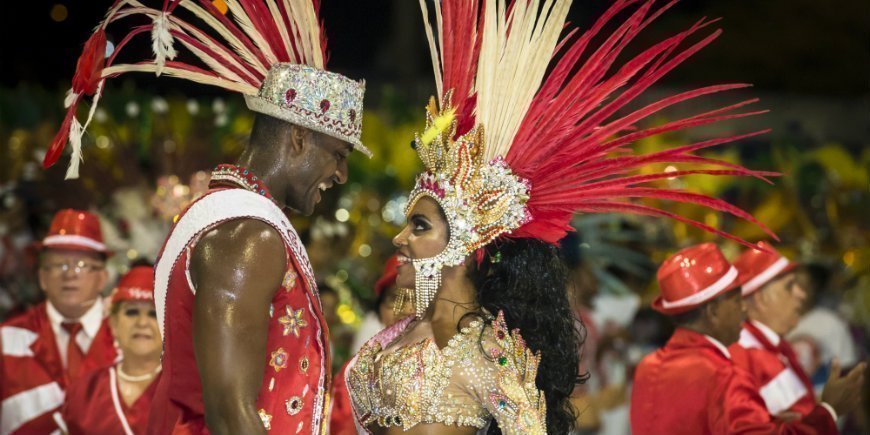
The Carnival in Rio is an annual event, in which the city is turned upside-down for five days.
Festivities in Rio de Janeiro take place 40 days before Easter, so the kick-off time depends on the date Easter falls on that year.
In 2025, the carnival starts on Friday 28 February
What will you experience in the Carnival in Rio de Janeiro?
If your path takes you by Brazil in the days around the carnival, then the event is a must-see.
Here, 400,000 foreigners and 5 million Brazilians gather each year to celebrate the carnival in Rio de Janeiro.
The carnival consists of 5 days of street celebrations, music and parades.
Samba parade in Sambodromo
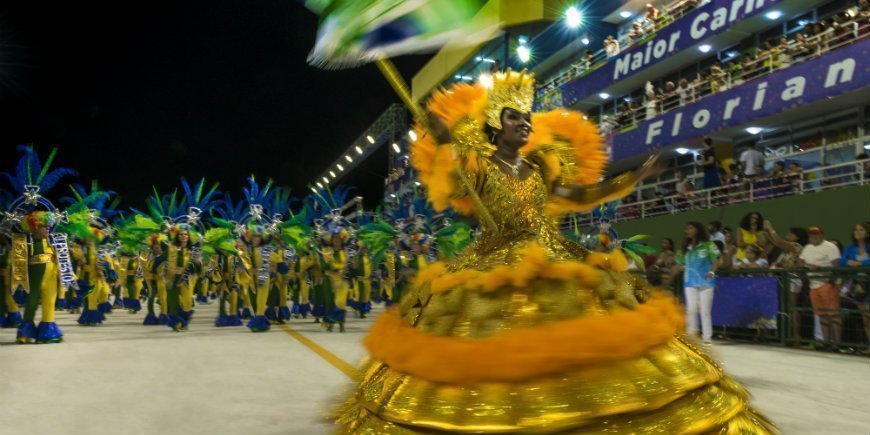
The samba parade is the highlight of the carnival. Here the samba schools compete with one another in a well-produced show at Sambadromo – a stadium built for these festivities.
The samba parade is a competition between the top 12 samba schools, the oldest of which stems from 1923. They compete for several days in categories such as theme, costume, samba music, and the overall impression of the parade, all of which are set a year in advance. Nothing is left up to chance.
Each parade features between 3000 and 5000 participants. The samba dancers of each parade are divided into groups of 100 and 200, all of whom wear the same costume. The small groups bring floats up in-between. Each samba school features about 8 floats, bringing the school’s themes to life.
Once the 3-5000 participants from one samba school have danced by the audience in all the colours of the rainbow, and the enormous and painstakingly decorated floats have glided by like large creatures, it’s time for the next samba school.
Each school has 80 minutes in which to show off. In the end, a winner is chosen from the prestigious parade festival.
* Buy your ticket well in advance, demand is very high.
Blocos
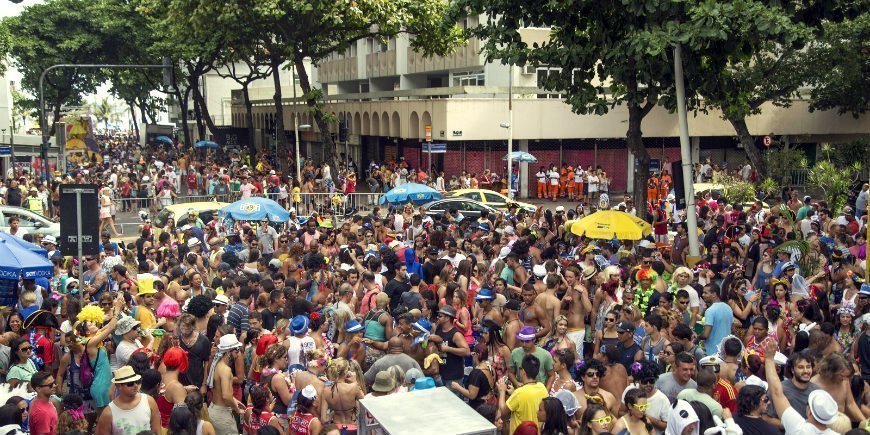
Along with the great Sambodromo parades, you can take part in street festivals, blocos, all over Rio, and people bring home-made costumes and party to the samba rhythms both day and night.
Most neighbourhoods throw their own street festivals, centred around a dance or music group, which either stays in one place or slowly moves around the block (hence the name, bloco).
Blocos actually start popping up several months before the carnival begins. Everyone can take part in the more than 500 different street festivals – all you have to do is meet up.
After five days of intense celebration of life, with grand and vibrant parades and countless street festivals, the festival is over. But before you know it, it’s time to arrange next year’s vivacious celebration.
The carnival returns each year with sequins, feathers and worry-free days.
Carnival history – where does the carnival tradition come from?
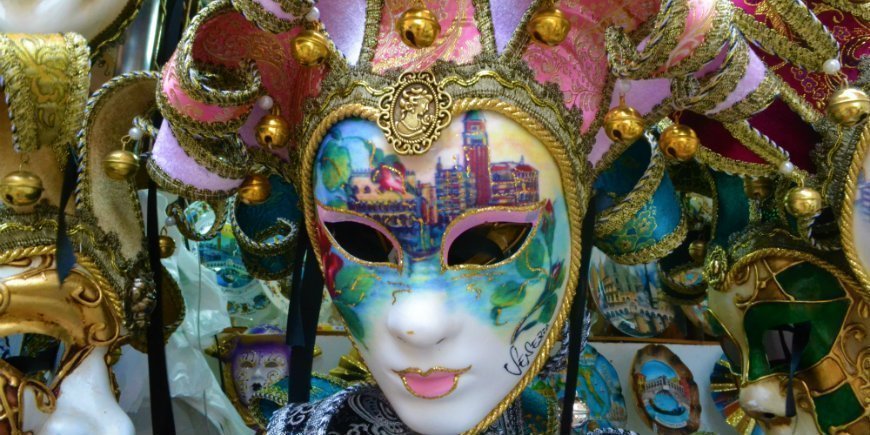
Today, the carnival in Rio de Janeiro is the largest in the world, and to many, the metropolis is synonymous with carnival.
But the carnival tradition actually started somewhere else entirely.
The original carnival tradition stems from the time before “The new world” was discovered. Here, Romans and Greeks celebrated the past year with a big public celebration.
The tradition spread to the Catholic parts of Europe, and the carnival in Venice, where people danced in the streets wearing masks, became the most famous. The carnival reached Latin America during colonial times, and colonialists brought the tradition from Portugal.
More and more Portuguese came to Brazil, and the tradition became a recurring event for the population. Carnival in South American countries can be dated as far back as 1723, and has gone through enormous changes over the centuries.
Where did the samba rhythms come from?
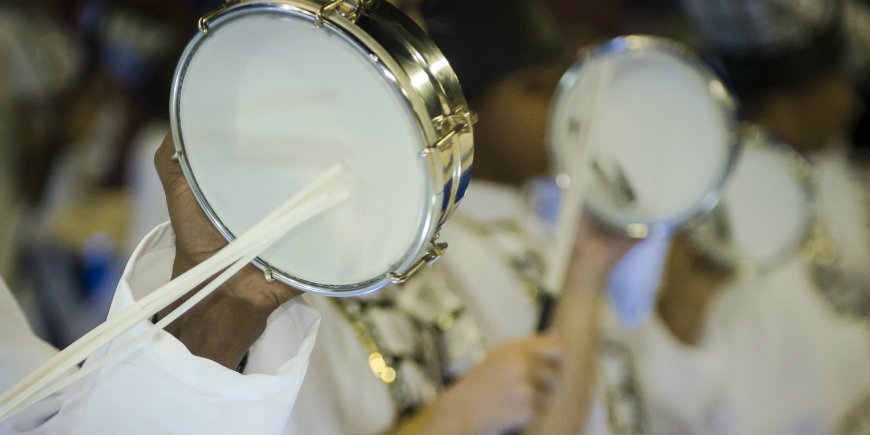
The music and dance traditions, which in many ways are epitomised in the carnival, have been developed over many years. And several peoples have been credited for developing the rhythms.
West-African slaves, who came to Brazil over 300 years, brought unique music traditions over the Atlantic. In 1888, slavery was abolished, and the former slaves moved to the big cities. Samba was created here, as a combination of music developed by Africans and the European tango and polka. In 1917, samba became part of the carnival.
In time, the Rio de Janeiro carnival grew bigger and bigger, and today, it is the biggest and most vivid festival of feathers and drumming.
Do you want to experience the carnival in Rio?
The carnival is a true public festival. Everyone takes part in the festivities, and during the carnival, there is no difference between rich and poor, old and young, or white and black. When the drums ring out in the streets of Rio de Janeiro, and the festival kicks off, everyone is equal.
Visit Rio de Janeiro on one of our tours to Brazil in the carnival period. So you too can experience this public festival with millions of other people.
TourCompass – From tourist to traveller
-
General Info
Receive all the latest news and offers delivered to your inbox!
Registered in England.
Registered Office:
Nucleus House 2
Lower Mortlake Road
Richmond, TW9 2JA
Company no.: 11454726

E-mail: info@tourcompass.co.uk
ATOL protected no. 10558.
ABTA member no. Y6104.
Read more.